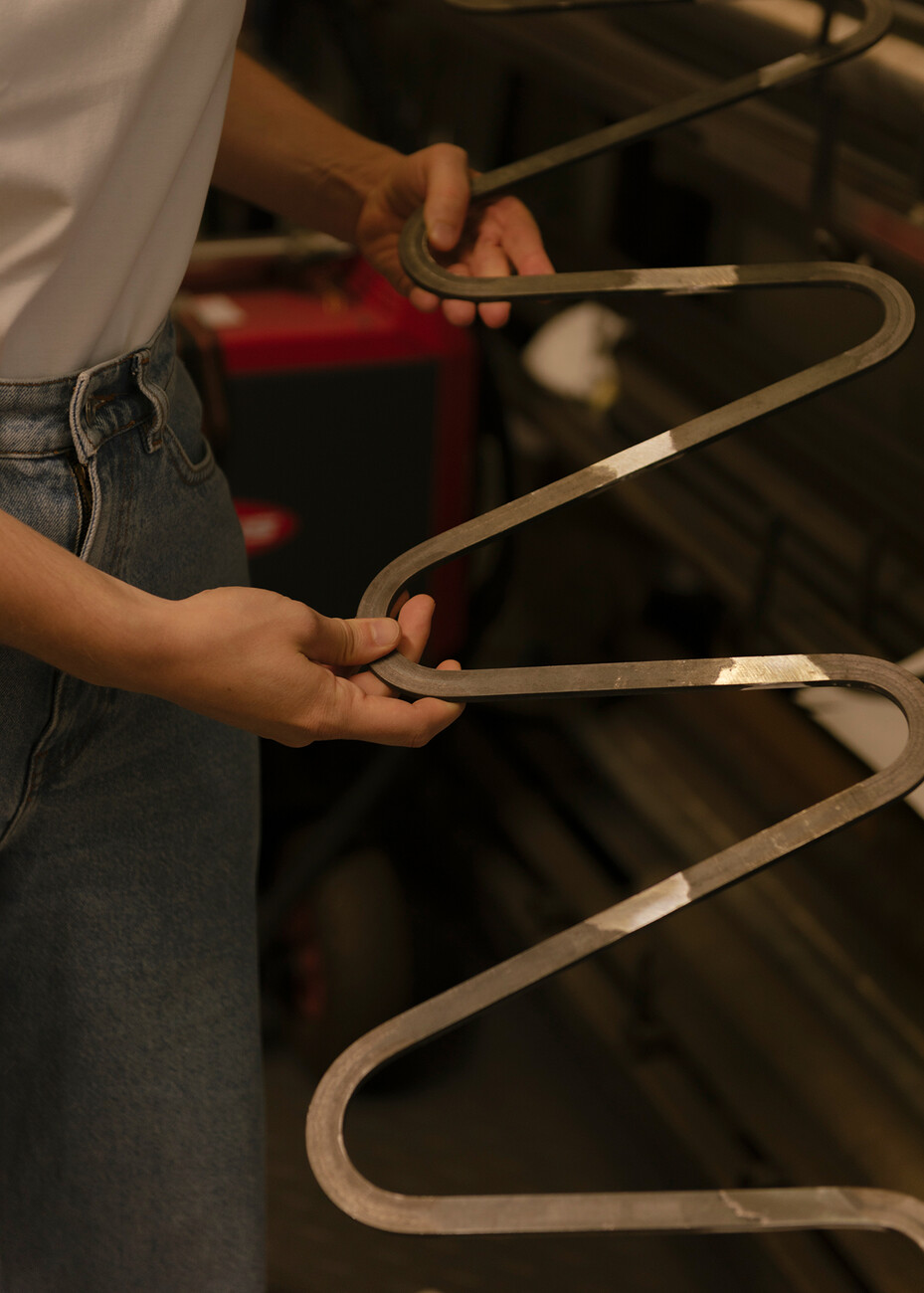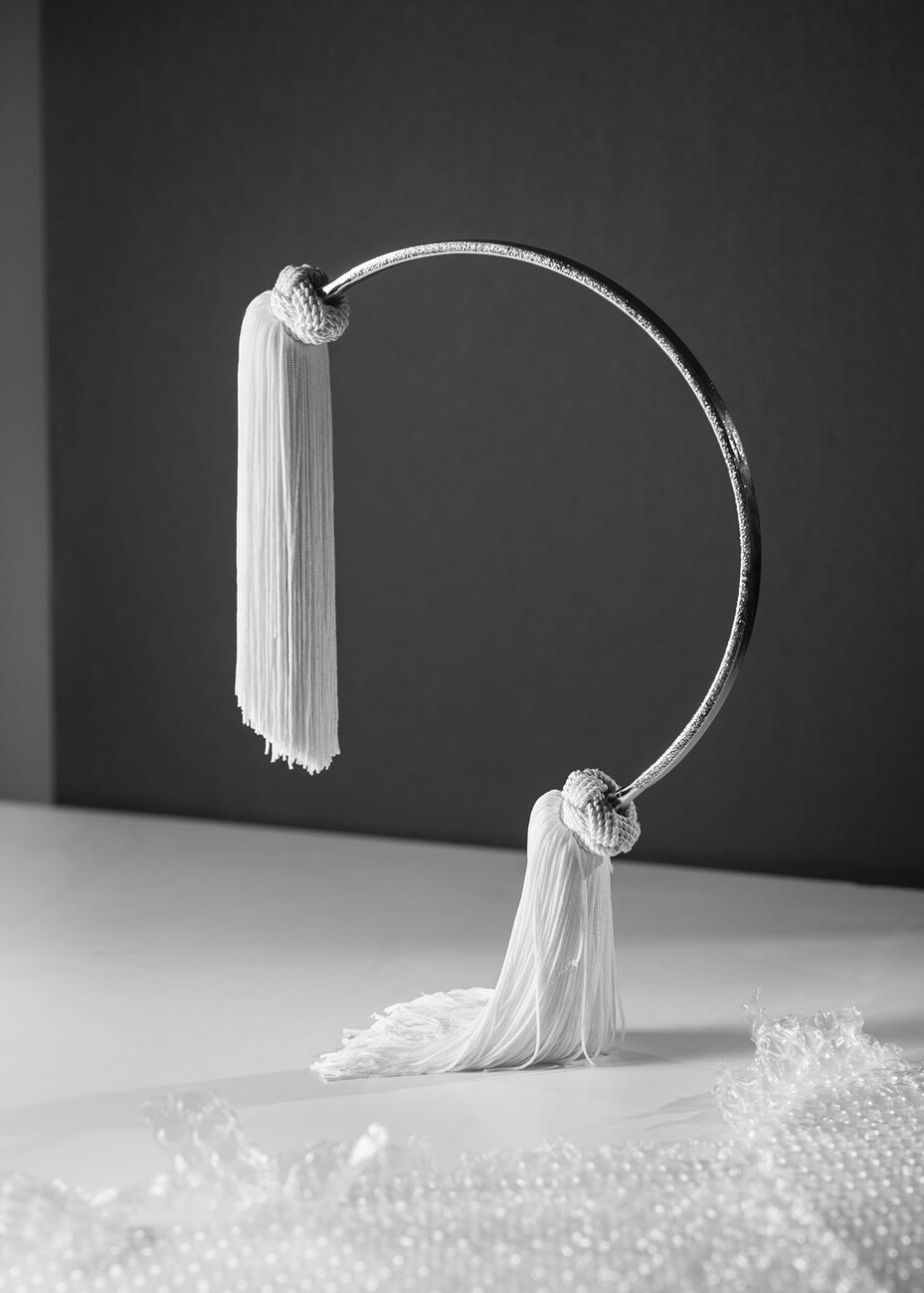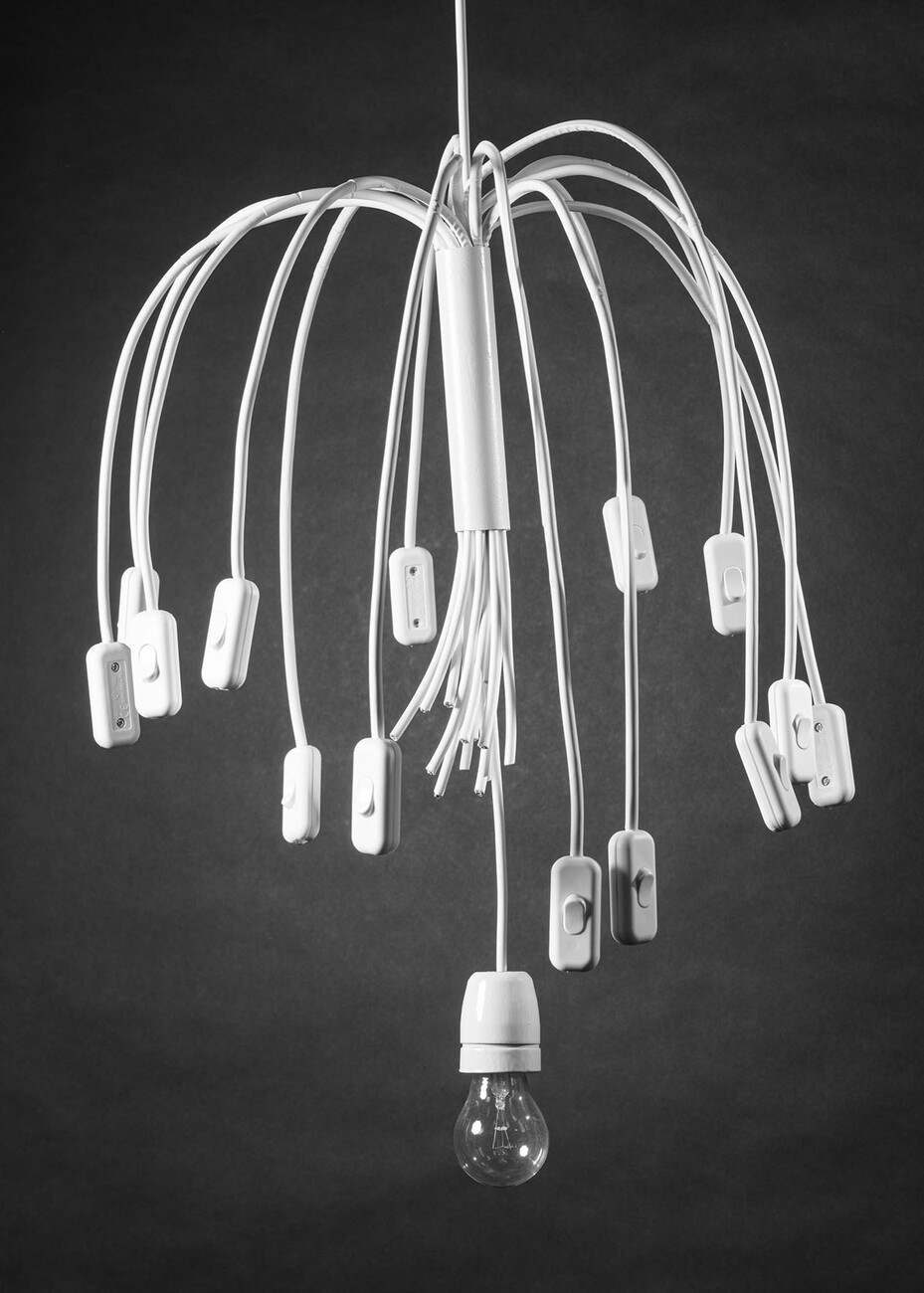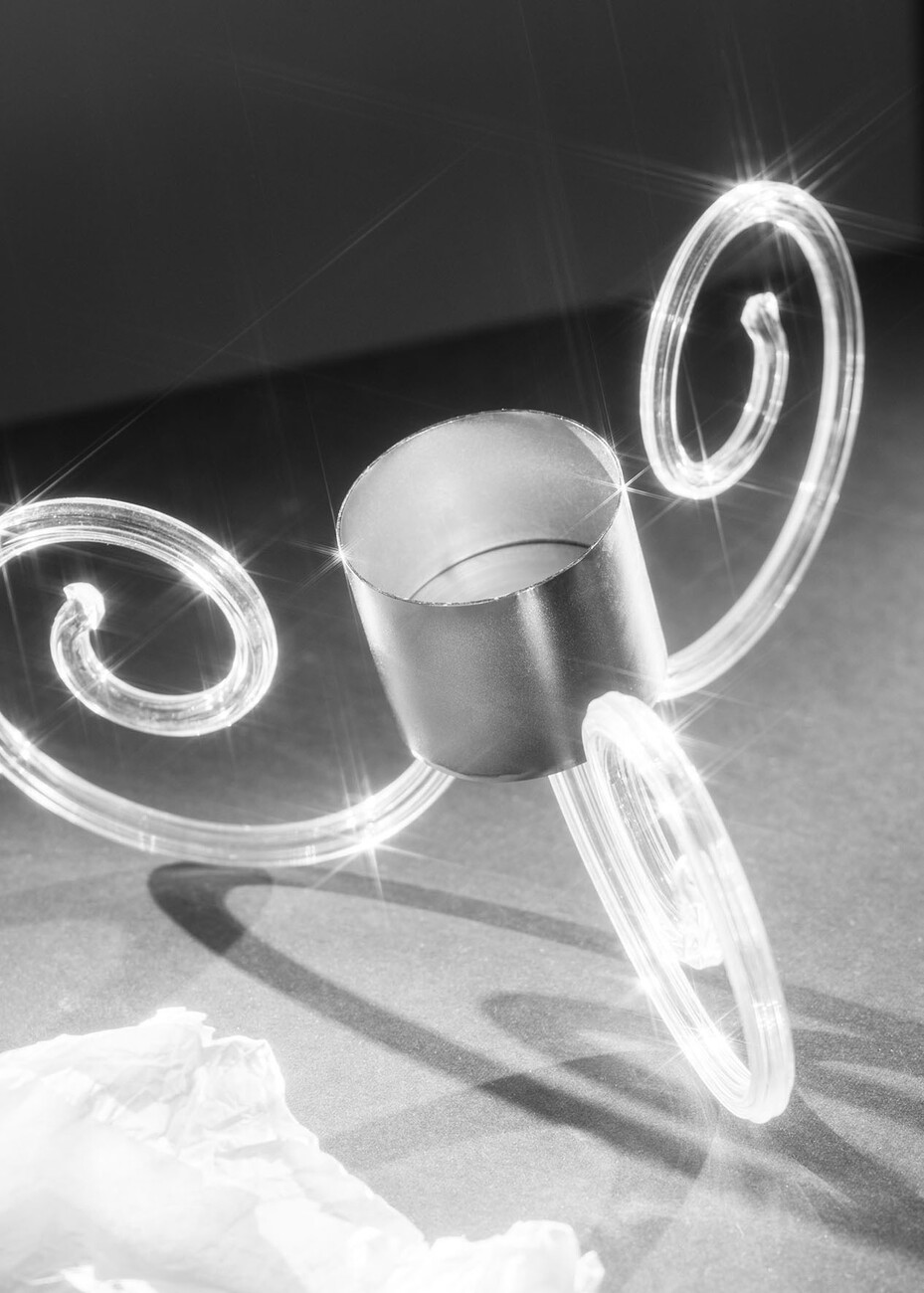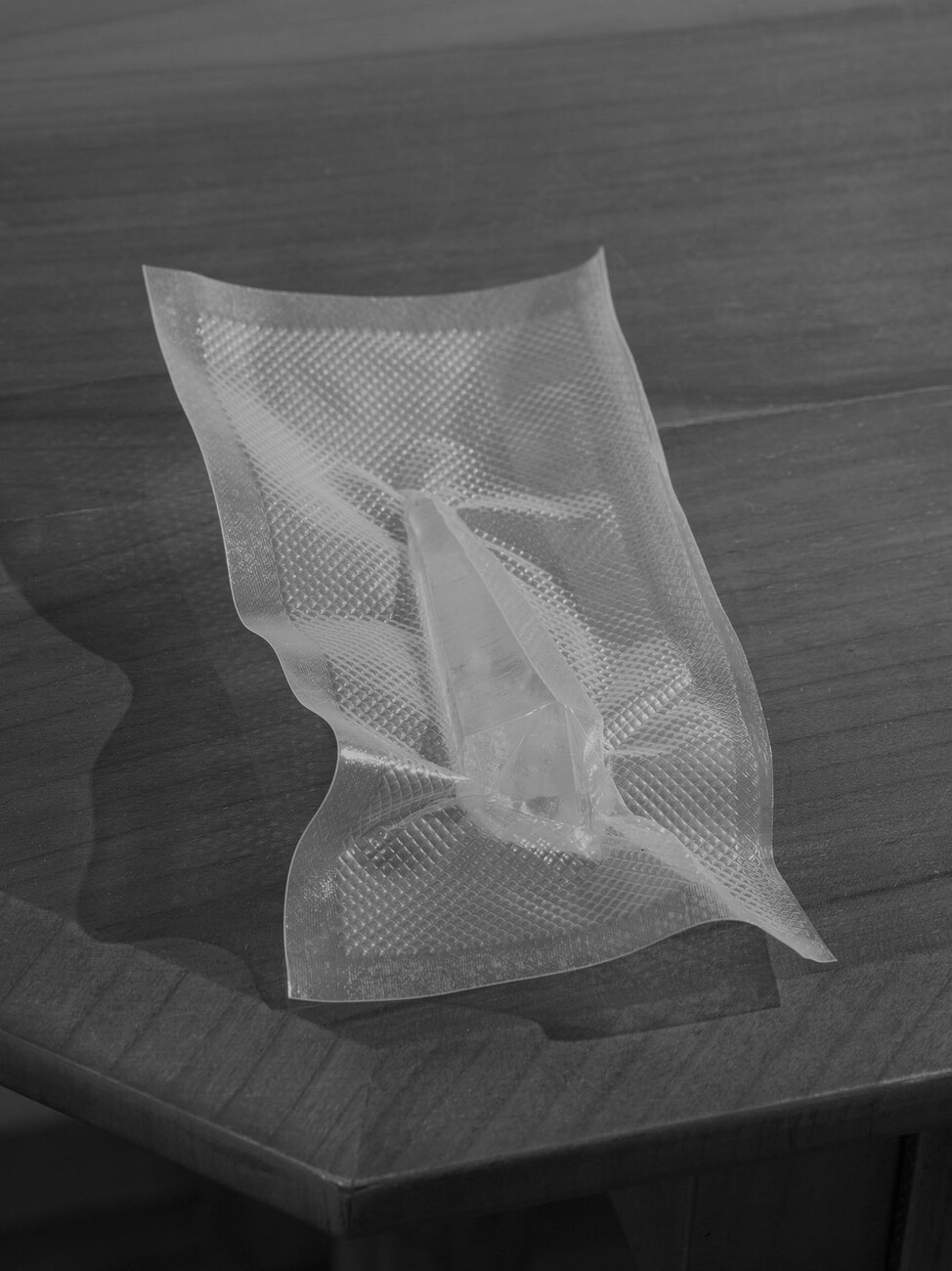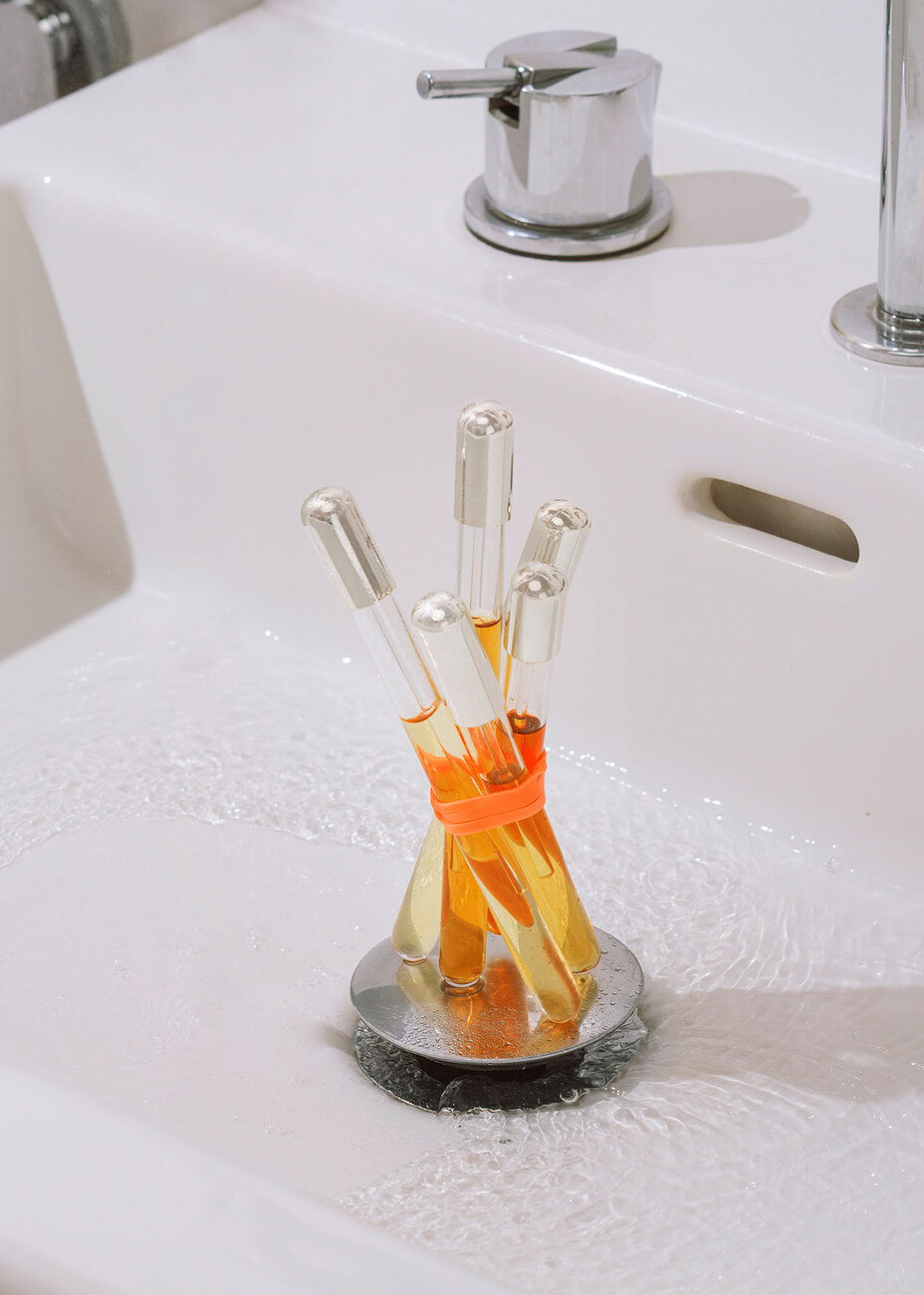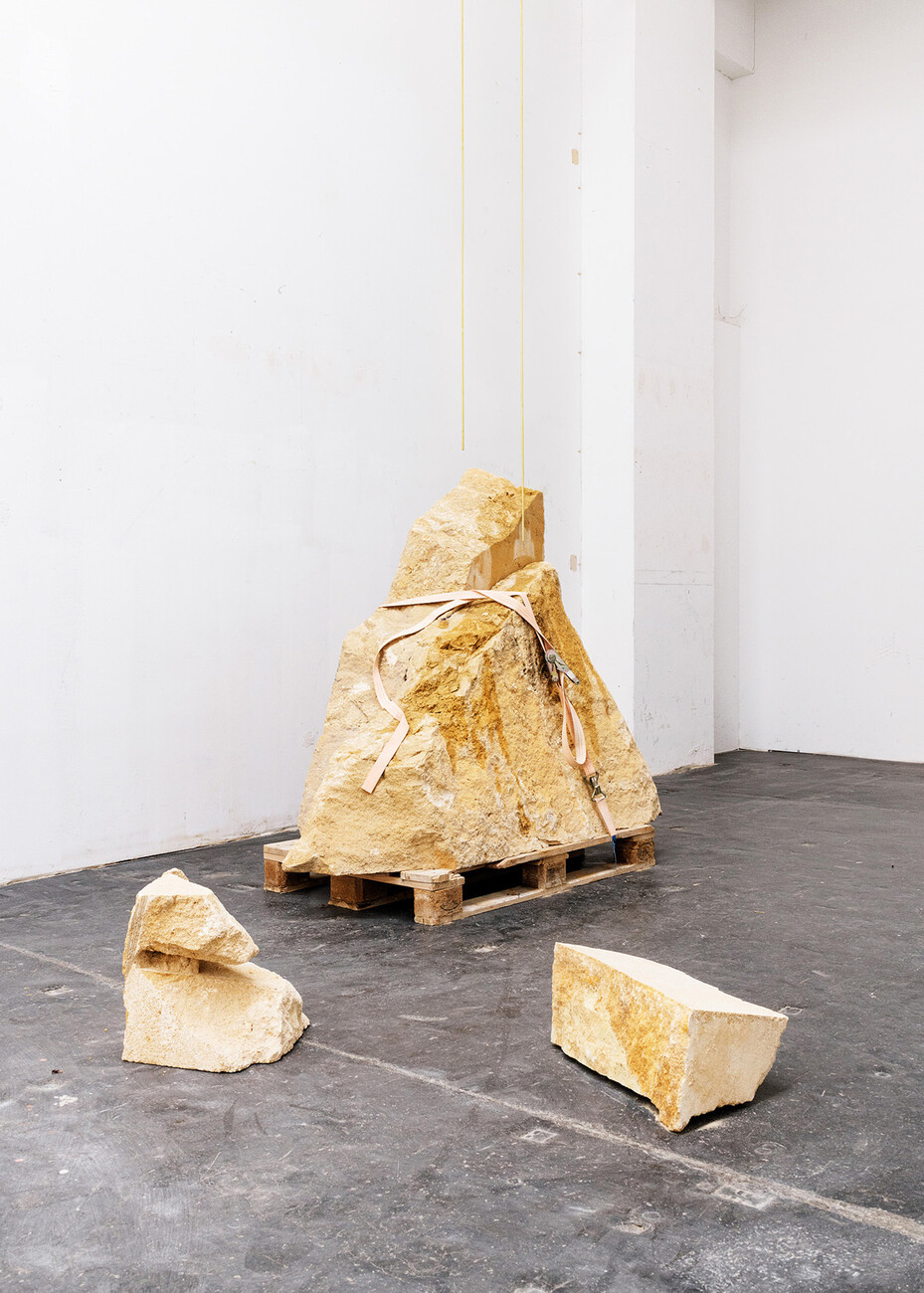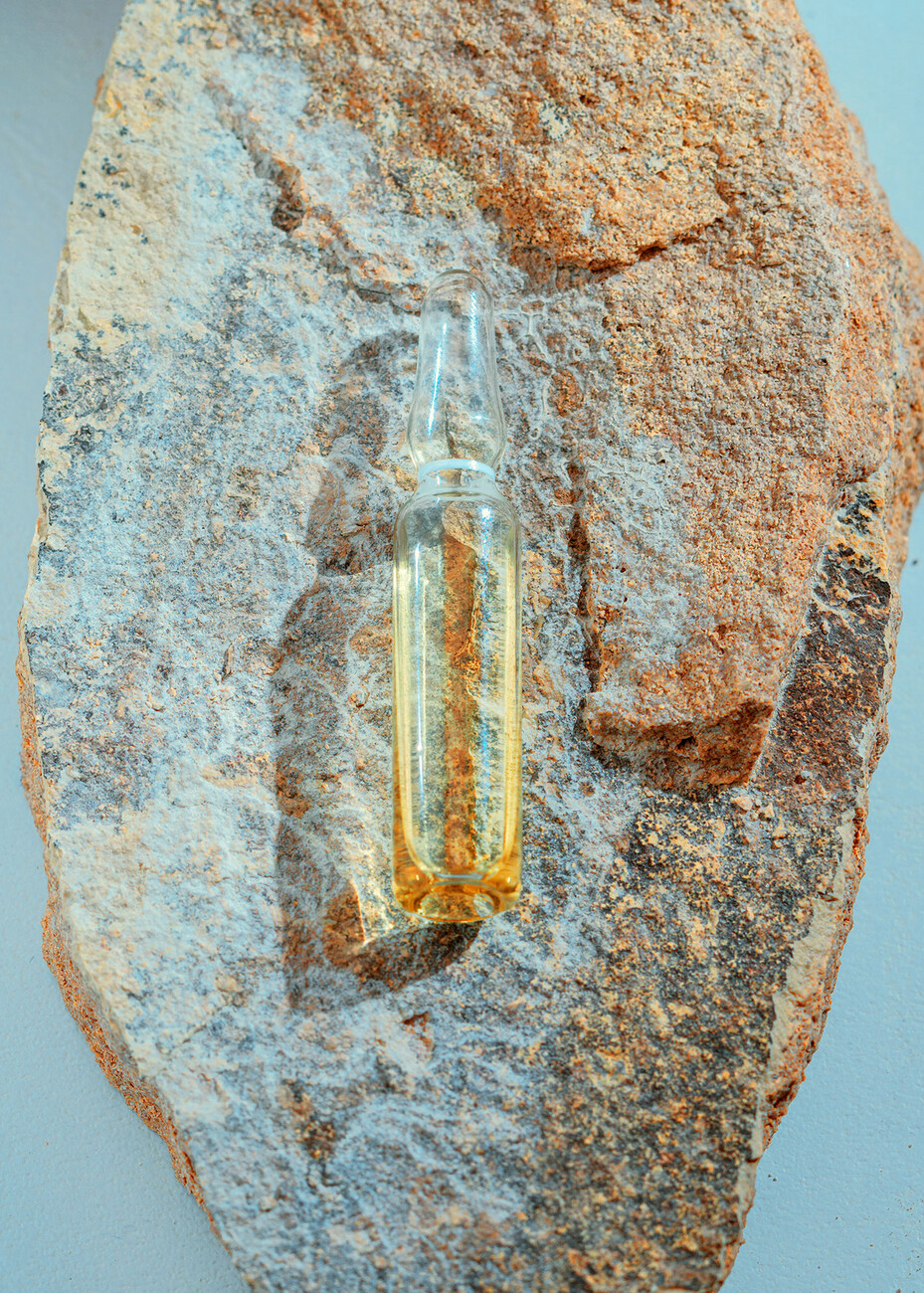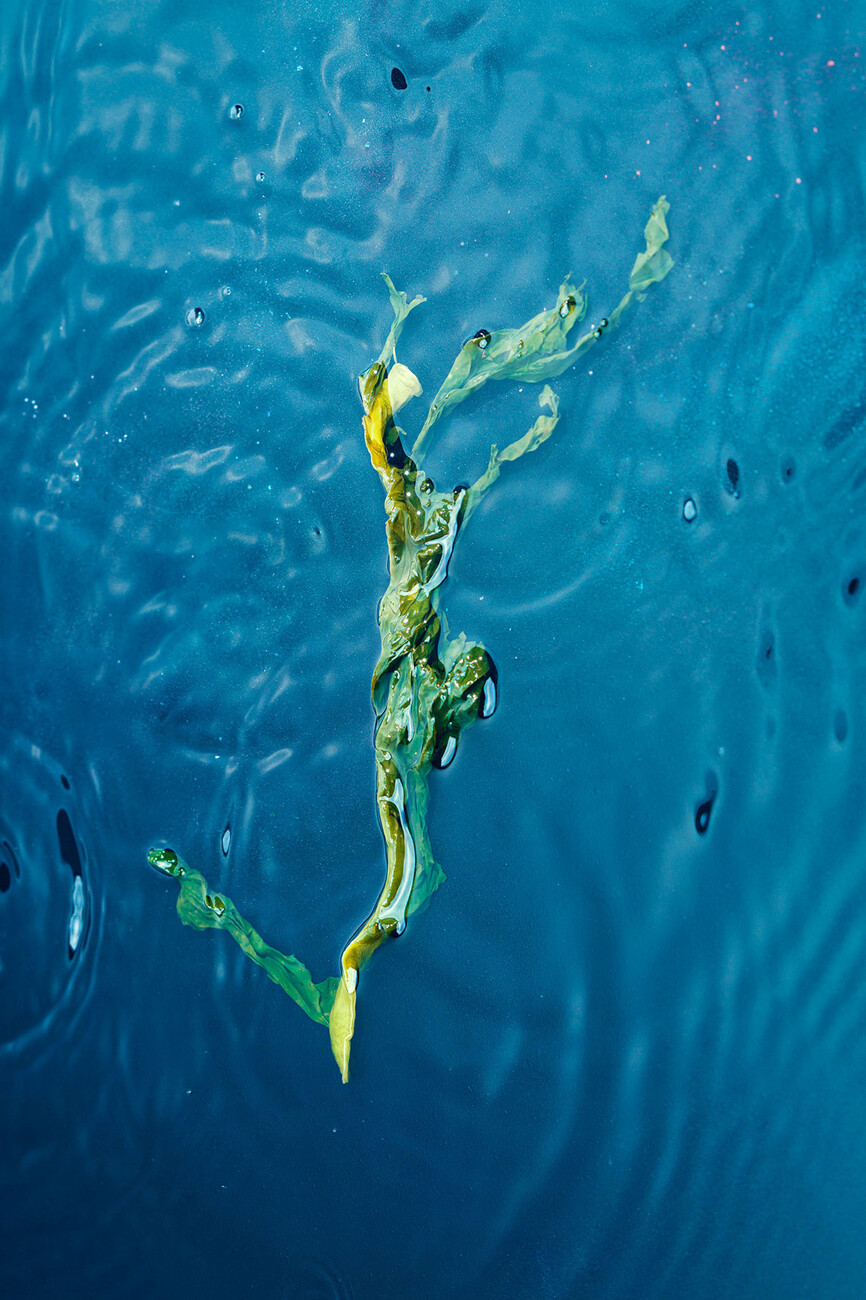YOUNG TALENTS
Of Chandeliers and Everyday Things
Cut glass, twisty-twirly brass – who on earth would apply the principles of contemporary design to such things as chandeliers? Only the people responsible for the design festival that is Vienna Design Week! For their format “Passionswege” (Stations of the Cross), this year, the team invited Anna Zimmermann to immerse herself in the world of Viennese craft chandelier manufacturers Bakalowits. The only instructions that festival director Gabriel Roland gave her were: “Don’t resort to luminaires or anything that uses light,” remembers the 28-year-old, chuckling. But she did do as she was told. In the workshop belonging to this 177-year-old family business she came up with a variety of products made of curved steel parts – wall hooks, fruit bowls, trivets, a vase, stools and a shelf. But as if that weren’t enough, Zimmermann also felt inspired to create a range of “Phantasy Objects” consisting of the less obvious parts of the chandelier such as its switch, cable or chains. On top of which she redesigned the Bakalowits showroom to fit in with the presentation of her project during the 2022 Vienna Design Week. “It was the most intensive project that I have ever realized together with a craft manufacturer,” she comments.
Exchange of information as a source of inspiration
Approaching a subject from various angles as was the case with Bakalowits, is something that appeals to Zimmermann. “What I am interested in is the holistic approach, from the spatial situation to the objects themselves and even the visual linking elements,” explains Zimmermann, who studied Graphic Design at Eindhoven’s Design Academy and who lives in Vienna. She enjoys teaming up with other creatives. The photos for her “Phantasy Objects”, for example, were the brainchild of Erli Grünzweil. She also likes collaborating with craftspersons. “This allows me to learn a great deal about materials, manufacturing processes, sustainability. The personal exchange of information is often a source of inspiration for my objects,” Zimmermann goes on to explain.
When this exchange of information suddenly ground to a halt at the outset of the COVID pandemic, Zimmermann joined forces with two colleagues and formed a collective by the name of Temporary.Arrangement. “We decided – if there’s nothing going on we need to do something by ourselves.” One result of this cooperation with Lino Gasparitsch and Bettina Willnauer was the exhibition “Alpen”, which was also on show at the Vienna Design Week. All three of the above designers grew up in the Alps, Zimmermann in St. Gallen, Gasparitsch in Germany, and Willnauer in Austria. Together, they have designed craft products that represent variations on objects typical of the region or that tell of the myths and legends in this mountain region. Zimmermann, for instance, came up with a ceramic milking stool which, with its gleaming white glaze, looks as if it had been drenched in milk. Even though the collective’s very name speaks of the temporary, they are not expecting “Alpen” to remain their only joint project.
A balance between the artistic and the commercial
Like many other young designers, Zimmermann is faced with the challenge of having to earn a living – and still find the time and the resources for her own projects, projects such as “Alpen”. In this respect she believes that the Eindhoven Design Academy has given its students a false picture of the designer’s profession, namely one of a free, successful star designer. “That just isn’t the reality of the situation,” comments the 28-year-old. So far, she has managed to find a good balance, one that is right for her. “For half the week, i.e., two and a half days, I deal with commercial jobs and for the other half I do my own thing."
Zimmermann often comes up with ideas for her own projects in her everyday life. “I take what I have observed or what preoccupied me and attempt to see it in a wider context,” she explains. One example: During the pandemic she collaborated with Nadja Zerunian, another Vienna-based designer, to come up with a range of conceptual objects. These “Souvenirs of Loneliness” take the experience of isolation during lockdown as their subject matter. They include a mini hip flask on a chain, enough for one shot – for the kinds of situation where somebody needs to steel themselves before taking part in mass events. Perhaps not meant as the kind of solution to a real problem that should be taken completely seriously, but very much a fun object, the kind that makes people laugh. After all, for Zimmermann humor is an integral part of design. “Humor fosters a lighter touch,” she remarks.








